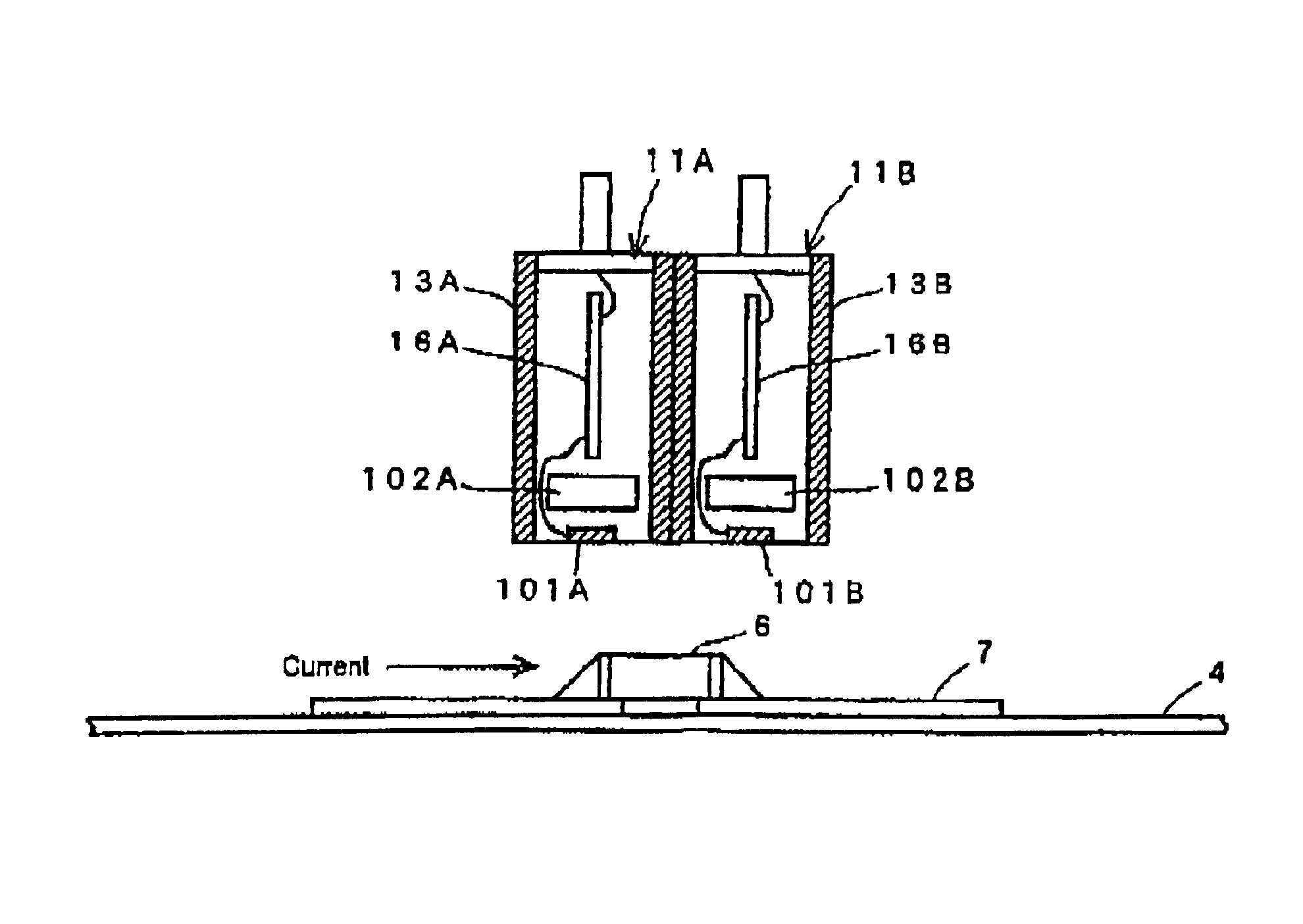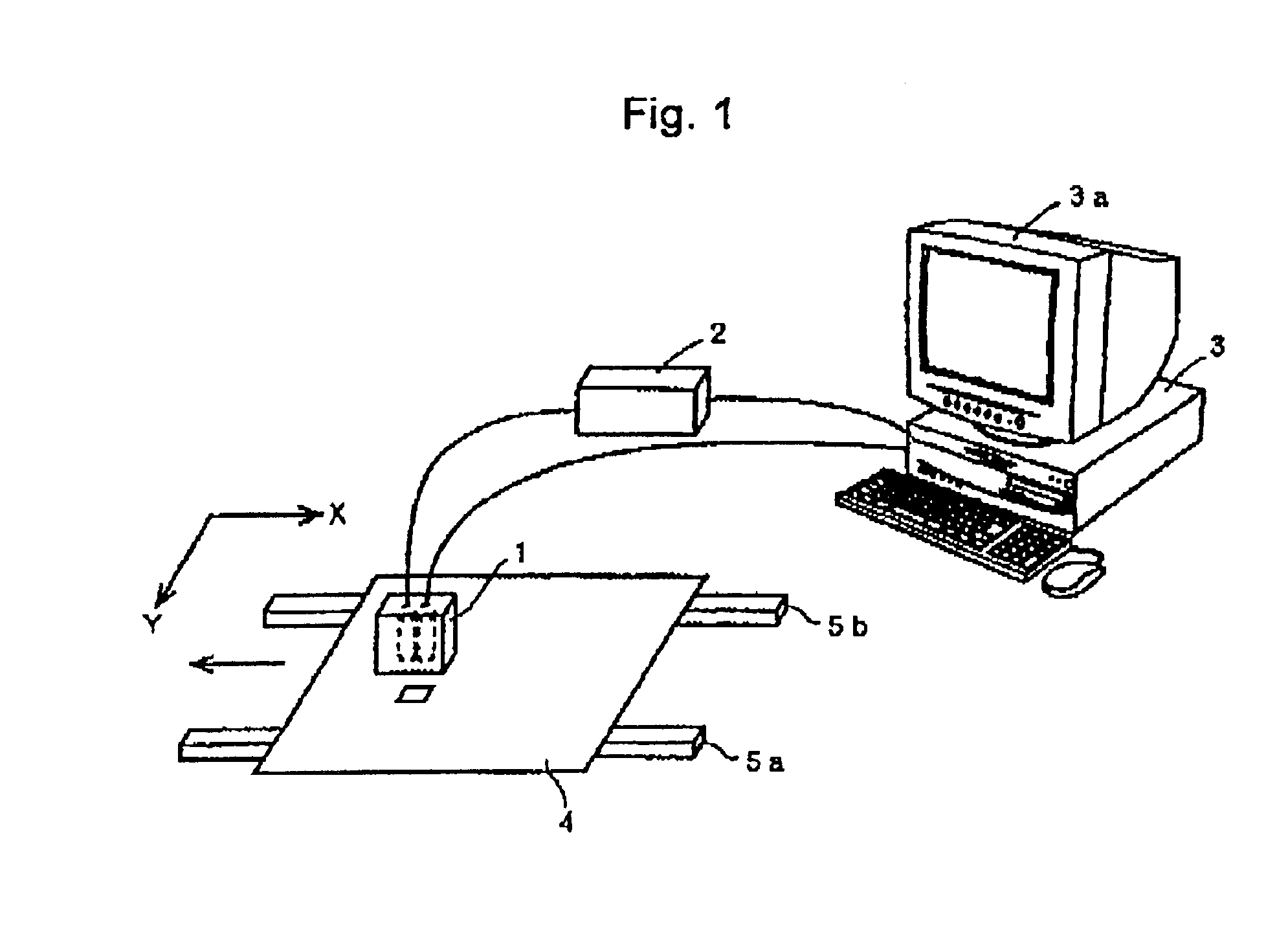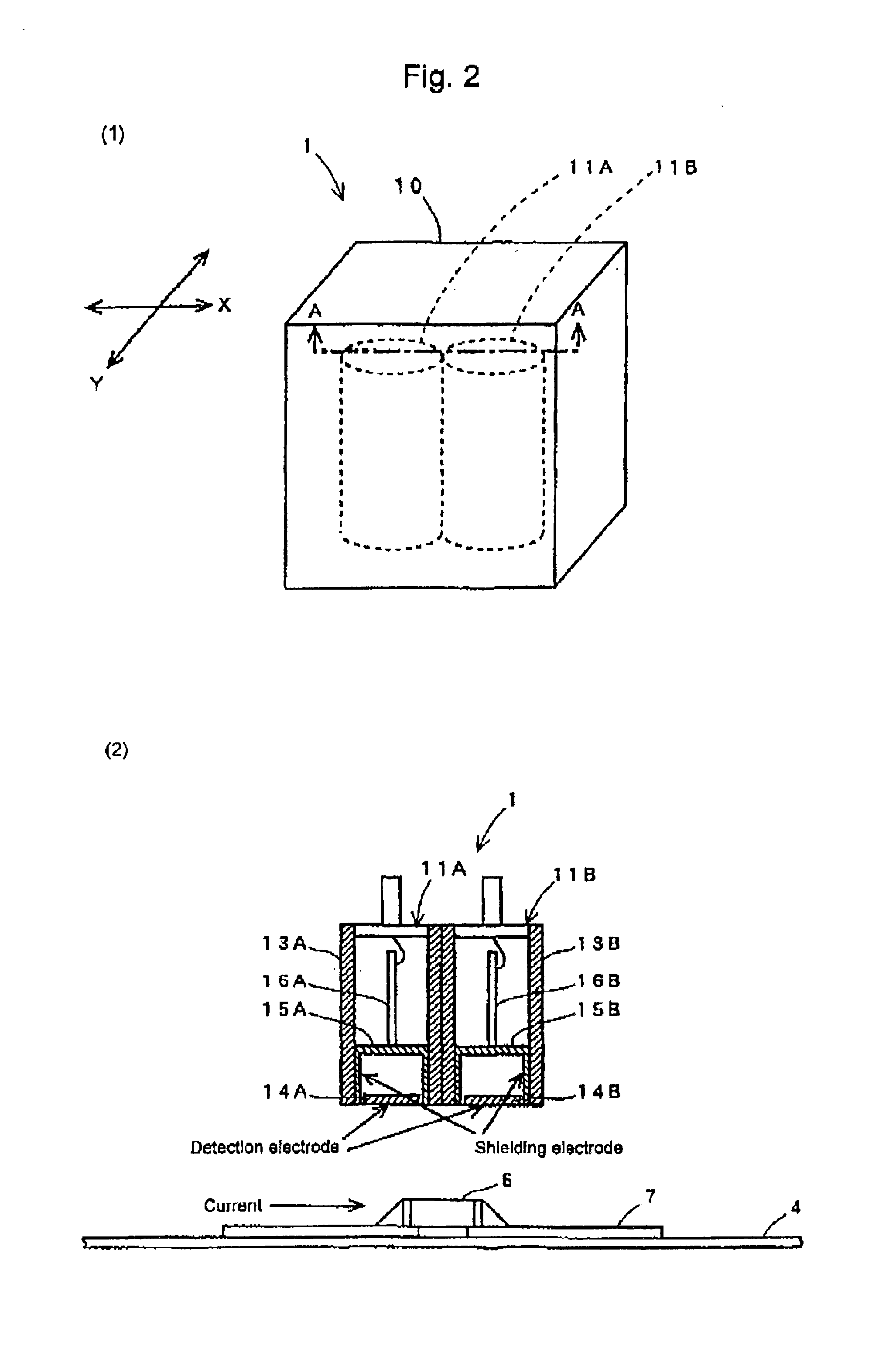Method and apparatus for inspecting printed circuit boards
- Summary
- Abstract
- Description
- Claims
- Application Information
AI Technical Summary
Benefits of technology
Problems solved by technology
Method used
Image
Examples
Embodiment Construction
[0058]FIG. 1 shows a schematic structure of an inspection apparatus in accordance with one preferred embodiment of the present invention. This inspection apparatus is used for detecting defects such as a disconnection and short-circuiting of a wiring pattern, a breakdown and a defective mounting of a part on a printed circuit board 4 (hereinafter, simply referred to as “circuit board 4”) in a non-contact state to the circuit board 4, and is constituted by a detection unit 1 placed at a position above the circuit board 4, as well as a position adjusting device 2, a control device 3, etc.
[0059]A circuit board 4 to be inspected is placed on transporting-use rails 5a, 5b, and is transported by a driving mechanism, not shown, and positioned to a predetermined inspection position. The above-mentioned position adjusting device 2 controls a positioning mechanism (not shown) in the detection unit 1 so that the position of the detection unit 1 is adjusted in the respective X and Y axis direct...
PUM
 Login to View More
Login to View More Abstract
Description
Claims
Application Information
 Login to View More
Login to View More - R&D
- Intellectual Property
- Life Sciences
- Materials
- Tech Scout
- Unparalleled Data Quality
- Higher Quality Content
- 60% Fewer Hallucinations
Browse by: Latest US Patents, China's latest patents, Technical Efficacy Thesaurus, Application Domain, Technology Topic, Popular Technical Reports.
© 2025 PatSnap. All rights reserved.Legal|Privacy policy|Modern Slavery Act Transparency Statement|Sitemap|About US| Contact US: help@patsnap.com



